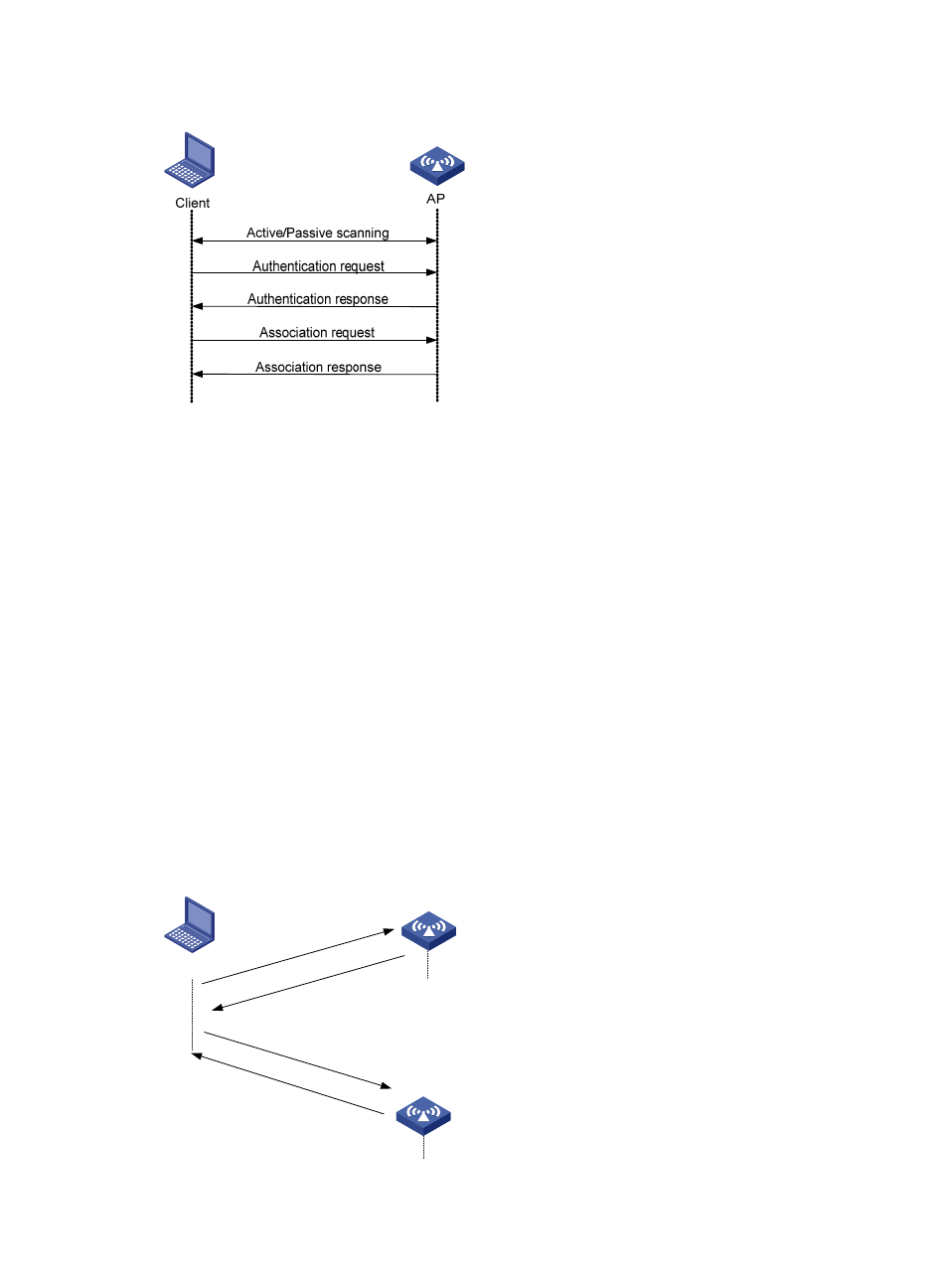Scanning – H3C Technologies H3C WX3000E Series Wireless Switches User Manual
Page 17

5
Figure 1 Establishing a client access
Scanning
A wireless client gets surrounding wireless network information in two ways, passive scanning and active
scanning. With active scanning, a wireless actively sends a probe request frame, and gets network
signals from received probe response frames. With passive scanning, a wireless client gets wireless
network information by listening to Beacon frames sent by surrounding APs.
Actually, when a wireless client operates, it usually uses both passive scanning and active scanning to
get information about surrounding wireless networks.
1.
Active scanning
When a wireless client operates, it periodically searches for (scans) surrounding wireless networks.
Active scanning falls into two modes according to whether a specified SSID is carried in a probe
request.
{
A client sends a probe request with no SSID (the SSID IE length is 0): The client periodically
sends a probe request frame on each of its supported channels to scan wireless networks. APs
that receive the probe request send a probe response, which carries the available wireless
network information. The client associates with the AP with the strongest signal. This active
scanning mode enables a client to actively get acquainted with the available wireless services
and select to access the proper wireless network as needed. The active scanning process of a
wireless client is as shown in
.
Figure 2 Active scanning (the SSID of the probe request is null, or, no SSID information is carried)
AP 2
Client
AP 1
Prob
e req
uest
(wit
h no
SSI
D)
Probe r
equest (
with no
SSID)
Probe R
espons
e
Prob
e Re
spon
se
- H3C WX5500E Series Access Controllers H3C WX3500E Series Access Controllers H3C WX2500E Series Access Controllers H3C WX6000 Series Access Controllers H3C WX5000 Series Access Controllers H3C WX3000 Series Unified Switches H3C LSWM1WCM10 Access Controller Module H3C LSUM3WCMD0 Access Controller Module H3C LSUM1WCME0 Access Controller Module H3C LSWM1WCM20 Access Controller Module H3C LSQM1WCMB0 Access Controller Module H3C LSRM1WCM2A1 Access Controller Module H3C LSBM1WCM2A0 Access Controller Module H3C WA3600 Series Access Points H3C WA2600 Series WLAN Access Points
